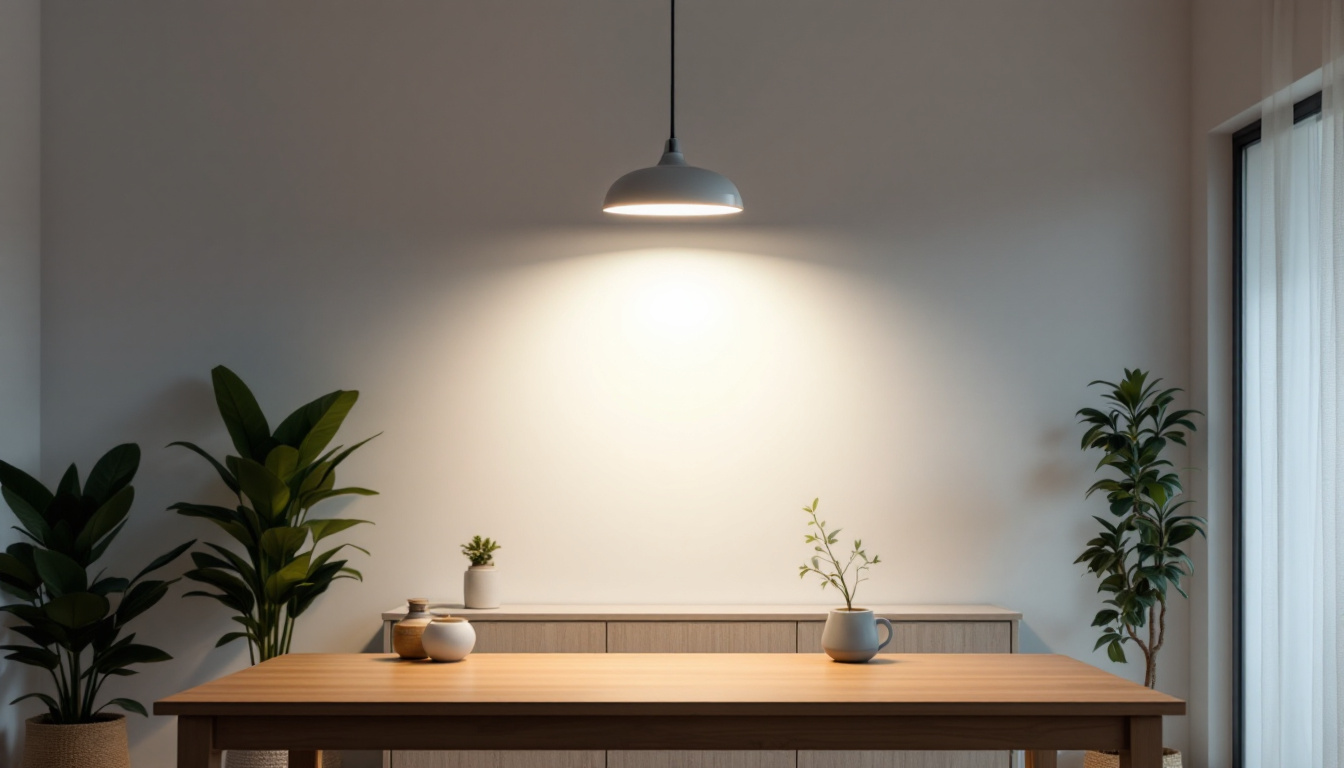
The use of Lotus LED thin trim fixtures has gained popularity among lighting contractors for their sleek design and energy efficiency. However, despite their advantages, several common mistakes can occur during installation and selection. Understanding these pitfalls can help contractors deliver superior results and enhance client satisfaction.
Before diving into the common mistakes, it is essential to have a solid understanding of what Lotus LED thin trim fixtures are. These fixtures are designed to provide a low-profile lighting solution that can fit into various architectural designs. Their thin trim allows for seamless integration into ceilings, walls, and other surfaces, making them a favorite in modern construction and renovation projects. The sleek design not only enhances the overall aesthetic of a space but also allows for flexibility in lighting arrangements, enabling designers to create unique atmospheres tailored to specific needs.
Lotus LED thin trim fixtures offer numerous benefits, including energy efficiency, longevity, and versatility. They consume significantly less power than traditional lighting options, leading to reduced energy bills for clients. Furthermore, their lifespan often exceeds that of standard bulbs, which means less frequent replacements and lower maintenance costs. This longevity is particularly advantageous in hard-to-reach areas, where changing bulbs can be a cumbersome task.
Additionally, the aesthetic appeal of these fixtures cannot be overlooked. Their minimalist design complements contemporary interiors, making them an ideal choice for residential and commercial spaces alike. The ability to choose from various color temperatures allows users to create different moods and enhance the functionality of each room. For instance, warmer tones can create a cozy atmosphere in living areas, while cooler tones can improve focus and productivity in office settings. However, to maximize these benefits, contractors must avoid common mistakes during the selection and installation processes.
Moreover, the adaptability of Lotus LED thin trim fixtures extends beyond their design. They can be used in a variety of applications, from accent lighting in art galleries to ambient lighting in restaurants. Their low profile also makes them suitable for installations in areas with limited ceiling height, where traditional fixtures might be impractical. As such, understanding the specific requirements of a project is crucial for leveraging the full potential of these innovative lighting solutions. By carefully considering the placement and configuration of these fixtures, designers can significantly enhance the functionality and aesthetic appeal of any space.
One of the first steps in utilizing Lotus LED thin trim fixtures is the selection process. This stage is critical, as choosing the wrong product can lead to various issues down the line. Here are some common mistakes contractors make when selecting these fixtures.
Contractors often overlook the importance of thoroughly reviewing the specifications of Lotus LED thin trim fixtures. Each product has specific requirements regarding wattage, voltage, and compatibility with dimmers or smart home systems. Failing to consider these factors can result in performance issues or even damage to the fixtures.
Before making a purchase, it is crucial to assess the lighting needs of the space and ensure that the selected fixtures meet those requirements. This includes understanding the lumen output necessary for adequate illumination and whether the fixture is suitable for the intended environment, such as wet or dry locations. Additionally, contractors should be aware of the fixture’s energy efficiency ratings, as this can impact long-term operational costs and sustainability goals. By carefully evaluating these specifications, contractors can avoid costly mistakes and ensure that the lighting solution is both effective and efficient.
Another common mistake is underestimating the significance of color temperature in lighting design. Lotus LED thin trim fixtures come in various color temperatures, ranging from warm white to cool daylight. The choice of color temperature can dramatically affect the ambiance of a space.
Contractors should take the time to discuss color preferences with clients and consider the intended use of the space. For example, warmer tones may be more suitable for residential environments, while cooler tones can enhance productivity in commercial settings. Selecting the wrong color temperature can lead to dissatisfaction and the need for costly replacements. Furthermore, it’s essential to consider how different color temperatures can interact with existing decor and furnishings. A well-thought-out color temperature selection can elevate the overall aesthetic of a room, creating a harmonious environment that complements the design vision. Engaging clients in this discussion not only helps in making informed choices but also fosters a collaborative relationship that can lead to greater satisfaction with the final outcome.
Once the right fixtures have been selected, the next step is installation. This stage is equally critical, as improper installation can negate the benefits of the fixtures and lead to safety hazards. Here are some common mistakes made during the installation of Lotus LED thin trim fixtures.
One of the most significant oversights during installation is not adequately planning for the electrical requirements of the fixtures. Lotus LED thin trim fixtures often require specific wiring configurations to function correctly. Failing to account for this can lead to flickering lights, tripped breakers, or even electrical fires.
Contractors should ensure that the existing wiring is compatible with the new fixtures. This includes checking the circuit load and ensuring that the wiring is up to code. Engaging a licensed electrician for this aspect can prevent future issues and ensure a safe installation. Additionally, it is advisable to conduct a thorough assessment of the electrical panel to confirm that it can handle the additional load from the new fixtures. This proactive measure can save time and money in the long run, as it avoids the need for costly upgrades or repairs down the line.
Proper mounting techniques are crucial for the performance and longevity of Lotus LED thin trim fixtures. Contractors sometimes rush this step, leading to uneven installation or insufficient support. This can result in fixtures that are not securely anchored, which may cause them to sag or fall over time.
To avoid this, contractors should carefully follow the manufacturer’s installation guidelines. This includes using the appropriate mounting hardware and ensuring that the fixtures are level and securely fastened. Taking the time to do this correctly will enhance the overall quality of the installation. Furthermore, it’s important to consider the ceiling material when mounting the fixtures; different materials may require specific anchors or screws to ensure a secure fit. For instance, drywall may necessitate toggle bolts, while concrete ceilings might need masonry screws. Understanding these nuances can significantly improve the installation outcome.
After installation, some contractors may encounter issues that could have been avoided with proper planning and execution. Understanding these common post-installation problems can help contractors address them proactively.
A frequent oversight is the failure to thoroughly test the fixtures after installation. Contractors may assume that everything is functioning correctly, only to discover issues later. This can lead to additional costs and dissatisfaction for clients.
It is essential to conduct a comprehensive test of all fixtures to ensure they are operating as intended. This includes checking for flickering, inconsistent brightness, and proper color temperature. Addressing these issues immediately can save time and resources in the long run.
Once the installation is complete, educating clients about their new Lotus LED thin trim fixtures is vital. Many clients may not understand how to operate dimmers or smart controls associated with the fixtures. Without proper guidance, they may misuse the system, leading to frustration and potential damage.
Contractors should take the time to explain the features and benefits of the fixtures, along with any maintenance requirements. Providing a simple user guide can also enhance the client experience and build trust in the contractor’s expertise.
Maintaining strong relationships with clients is essential for any lighting contractor. However, common mistakes during the selection and installation of Lotus LED thin trim fixtures can jeopardize these relationships. Here are some strategies to ensure client satisfaction.
Effective communication is key to understanding client needs and expectations. Contractors should engage in open discussions about the lighting design process, including the selection of fixtures and installation techniques. This transparency fosters trust and allows clients to voice their preferences and concerns.
Regular updates throughout the project can also keep clients informed and involved, ensuring that they feel valued and respected. This approach can lead to positive referrals and repeat business.
In the event of any issues arising post-installation, contractors should be proactive in addressing them. Clients appreciate contractors who take responsibility and work diligently to resolve problems. This can include scheduling follow-up visits to troubleshoot issues or providing additional support as needed.
By demonstrating a commitment to client satisfaction, contractors can strengthen their reputation and encourage long-term relationships with clients.
Lotus LED thin trim fixtures offer a modern, energy-efficient lighting solution that can enhance any space. However, lighting contractors must be aware of the common mistakes that can arise during the selection and installation processes. By understanding the product, avoiding pitfalls in selection and installation, and maintaining strong client relationships, contractors can deliver exceptional results and ensure client satisfaction.
Ultimately, the success of a lighting project hinges on the contractor’s attention to detail and commitment to quality. By avoiding these common mistakes, contractors can elevate their work and contribute to the growing popularity of Lotus LED thin trim fixtures in the industry.
Ready to avoid common mistakes and excel in your lighting projects with Lotus LED thin trim fixtures? At LumenWholesale, we provide lighting contractors like you with the highest quality, spec-grade lighting products at unbeatable wholesale prices. Say goodbye to local distributor markups and hello to superior lighting solutions that meet the highest industry standards. With our hassle-free bulk buying and free shipping, you can trust that you’re getting premium lighting at the best value — without hidden fees or compromises. Elevate your lighting projects by visiting LumenWholesale today and experience the perfect blend of quality, affordability, and convenience.

Discover how 4 feet LED lights can revolutionize your lighting solutions with energy efficiency, versatility, and superior illumination.

Discover the essential guide for lighting contractors on selecting the perfect CFL bulb ballast.

Discover the common pitfalls lighting contractors face when installing light wall switches and learn how to avoid them with our expert guide.

Discover expert insights on light fixtures for drop ceilings, answer common questions, and learn how to choose the best lighting solutions to enhance your space efficiently..